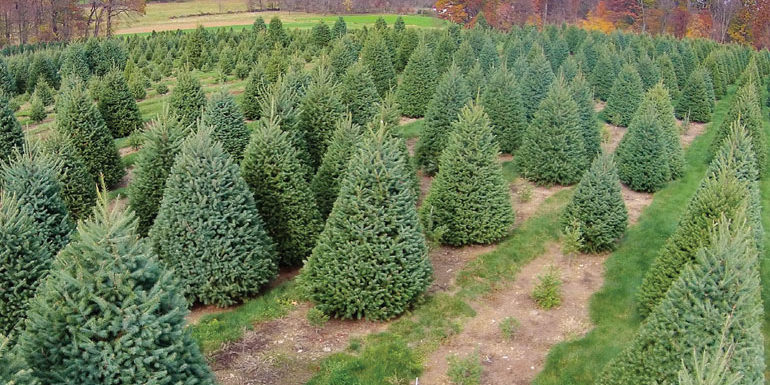For many, the yearly adventure of trudging off, bundled with hats and scarves to pick the perfect Christmas tree has long been a family tradition not to be missed. While most people have a routine to selecting their tree, we asked Rick Dungey from the National Christmas Tree Association to give insight on what is new for the season and what tips he has for making your tree last the whole season.
The Real Deal
There are several advantages to selecting a real Christmas tree, beyond their fragrant appeal. First and foremost, evergreens are 100 percent biodegradable and once the season is over, can be recycled for a variety of purposes benefiting wildlife and nature in general.
Secondly, they contain no chemical residue while fake, plastic trees are made of PVC, a dangerous chemical.
And lastly, purchasing a fresh-cut Christmas tree supports a local tree farmer (most artificial trees are made overseas and shipped to North America).
Types of Trees
Although region plays a large part in what types of evergreens are available, Dungey finds the most popular varieties are balsam fir, Douglas fir, noble fir, Scotch pine, Virginia pine, and eastern white pine mainly because of how easy they are to grow. However, across the United States, there are more than 35 different species of evergreens grown for their Christmas appeal.
Here is our roundup of some of the most common evergreens available:
 Virginia Pine: One of the few evergreens to tolerate warm winter temps, Pinus virginiana is a first pick among Christmas trees for Southerners. It’s also a good cut tree because, like all pines, it holds its needles well.
Virginia Pine: One of the few evergreens to tolerate warm winter temps, Pinus virginiana is a first pick among Christmas trees for Southerners. It’s also a good cut tree because, like all pines, it holds its needles well.
Dungey claims there are no secrets to keeping your tree healthy longer, other than sufficient watering. However the most important tip to remember is to not let the cut surface of the trunk be exposed to air for more than 3-6 hours.















